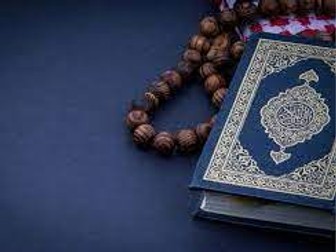History Of Quran: A Journey Of 1400-Years
<p>The Quran, Islam’s holy book, has captivated hearts and minds for over 14 centuries. But how much do you really know about its rich history? Join us as we explore the fascinating journey of this sacred text, from its revelation to its enduring impact on millions of believers worldwide.</p>
<p>The Quran, the holy book of Islam, stands as a beacon of guidance for over 1.8 billion Muslims around the globe. Its verses have been recited, studied, and revered for more than 1400 years. But have you ever wondered about the extraordinary history behind this divine revelation? In this blog post, we’ll delve into the captivating story of the Quran’s origin, compilation, and preservation, uncovering seven remarkable chapters in its journey through time.</p>
<p>How Did the Quran Come to Be?<br />
The story of the Quran begins in 610 CE when Prophet Muhammad (peace be upon him) received the first divine revelation in the Cave of Hira near Mecca. Over the next 23 years, the Quran was revealed gradually, addressing various aspects of faith, morality, and social issues.</p>
<p>Did you know? The word “Quran” means “recitation” in Arabic, reflecting its oral tradition.</p>
<p>The Quran’s Early Preservation<br />
During the Prophet’s lifetime, the Quran was primarily preserved through memorization by his companions. However, scribes also wrote down verses on various materials, including parchment, bones, and palm leaves.</p>
<p>Key point: This dual method of preservation – oral and written – played a crucial role in safeguarding the Quran’s authenticity.</p>
<p>The First Compilation: Abu Bakr’s Visionary Initiative<br />
After the Prophet’s passing, the first Caliph, Abu Bakr, recognized the need for a unified written compilation of the Quran. He appointed Zaid ibn Thabit, the Prophet’s former scribe, to lead this monumental task.</p>
<p>Fascinating fact: This first compilation was completed within two years of the Prophet’s death, ensuring the Quran’s preservation for future generations.</p>
<p>Uthman’s Standardization: Unifying the Muslim Ummah<br />
During the reign of the third Caliph, Uthman ibn Affan, variations in Quranic recitation emerged across the expanding Muslim empire. To address this, Uthman commissioned a standardized version of the Quran, which became the basis for all future copies.</p>
<p>Did you know? Uthman sent copies of this standardized Quran to major Muslim cities, cementing its authenticity across the Islamic world.</p>
<p>The Art of Quranic Calligraphy<br />
As Islam spread, the art of Quranic calligraphy flourished. Master calligraphers developed intricate styles to write the Quran, transforming its verses into stunning works of art.</p>
<p>Did you Know? The Prophet Muhammad ﷺ said, "There is a surah in the Quran called <a href="https://surahalmulk.net/" target="_blank" rel="nofollow">Surah Mulk</a>, which contains only thirty verses that will intercede for its reciter until he is forgiven. This surah is 'Blessed is He in Whose Hand is the dominion.</p>
